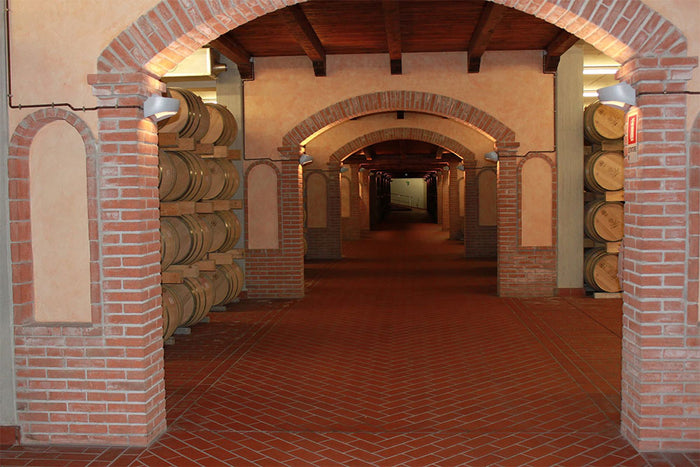
Perfume

Color

Taste
Serve at:
16 - 18 °C.
Longevity:
05 - 10 years
Decanting time:
1 hour

- Start up year: 1960
- Oenologist: Giorgio Marone, Riccardo Curreli
- Bottles produced: 1.700.000
- Hectares: 600
Until the 1980s, the activity was limited to the production and sale of bulk wine, with timid initiatives to sell bottled wine, with poor results.
In the mid-1970s, with the arrival of a new board of directors, headed by current president Antonello Pilloni, a turning point occurred. The new management team was animated by great enthusiasm and passion, and the Internationally renowned oenologist Giacomo Tachis was called in as a consultant. He took the fate of the Cantina Santadi to heart, became attached to the territory, and with his intervention the wines of the Cantina di Santadi took a quantum leap, so much so that they were immediately accepted in the most important markets, with awards for great quality and strong identity.
From then on it has been a continuous crescendo; the Santadi wine brand is increasingly widespread and appreciated all over the world, the success of which is undoubtedly due to the team, i.e. the producers, administrators, salesmen, collaborators and workers all of whom represent a heritage of great professionalism for the territory. Read more


| Name | Santadi Carignano del Sulcis Rocca Rubia Riserva 2021 |
|---|---|
| Type | Red still |
| Denomination | Carignano del Sulcis DOC |
| Vintage | 2021 |
| Size | 0,75 l |
| Alcohol content | 14.5% by volume |
| Grape varieties | 100% Carignano |
| Country | Italy |
| Region | Sardinia |
| Vendor | Santadi |
| Origin | Vineyards near the coast in the lower Sulcis. |
| Climate | Hot and dry summers, mild Winters. |
| Soil composition | Sandy and clayey soils, poor in organic matter. |
| Cultivation system | Erect shrub cultivation, ungrafted rootstock (Latin vineyard). |
| Harvest | By hand, starting in late September and ending around mid October. |
| Wine making | After stemming and crushing, the grapes are fermented and macerated for 12 4 days in stainless steel tanks at controlled temperature of 25-28 °C. During this period, the must is frequently pumped up, thus fully absorbing the noble tannins typical of bush-grown carignano. |
| Aging | After malolactic fermentation, the wine is transferred to small, fine grained 1st and 2nd-passage French oak casks for 10 2 months, to further develop its biochemical and chemical-physical properties, aroma and taste. Further ageing in the bottle for several months enables early bouquet development. |
| Allergens | Contains sulphites |





